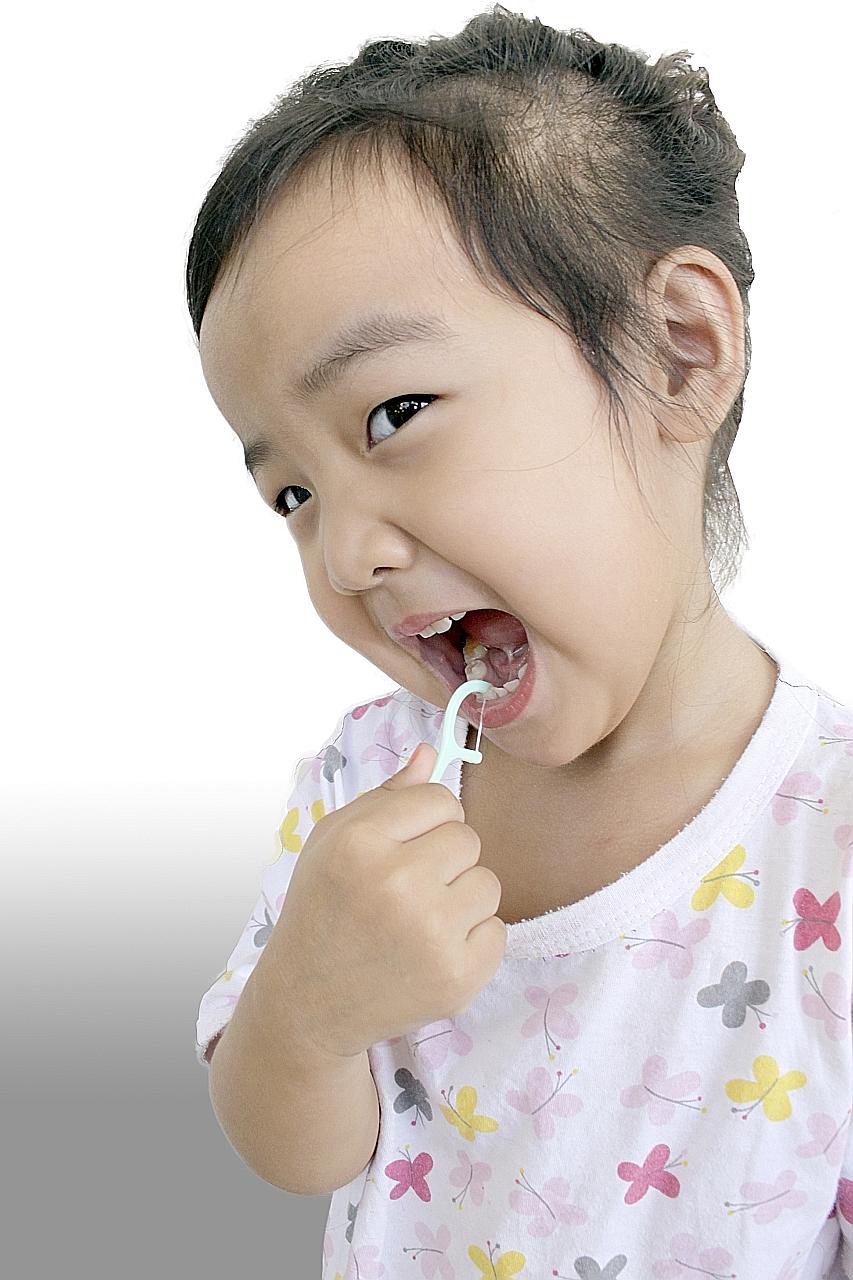Healthy Spaces
Keep flossing for that gloss
Joyce Teo finds out why we need to floss our teeth every day and lists the various products
Sign up now: Get ST's newsletters delivered to your inbox

Inculcate the flossing habit in children once they have developed manual dexterity.
PHOTO: ISTOCKPHOTO
Follow topic:
The daily flossing of your teeth helps to keep them healthy.
Despite recent reports that there is a lack of strong evidence showing that flossing can prevent cavities or severe gum disease, dental specialists in Singapore maintain that flossing is important for oral hygiene.
"Flossing helps to get rid of plaque and food debris trapped between teeth," said Dr Helena Lee, a periodontist from Specialist Dental Group. "These cannot be removed by brushing, which works well only on exposed tooth surfaces.
"If flossing is not done and plaque accumulates, it would lead to gum disease and tooth decay."
Flossing is the use of dental floss or thread to clean between the teeth.
-
How to floss
Dr Helena Lee, a periodontist from Specialist Dental Group, shares tips on flossing:
Do not be stingy with floss
Use a 30cm-long string of floss, which allows you to wrap it around the middle fingers of each hand. As you floss and particles are picked up with the flossing, use a new section of the string for the next area.
Floss once a day
Plaque builds up around and between teeth daily. Most plaque hardens into tartar within days, so flossing should be done every day. Tartar build-up can cause gum disease, and tartar can only be removed with special tools at the dental clinic.
Bleeding a little is normal
If you are flossing for the first time, it is quite common for your gums to bleed. If this happens, it is because your gum tissue is irritated by the bacteria in the plaque, causing it to bleed at the slightest amount of pressure.
The bleeding should stop as your gums become healthier. See your dentist if the bleeding persists.
Do children need to floss too?
Once a child's primary, or baby, teeth start to touch each other, parents can help to floss their teeth. This occurs between the ages of two and six, Dr Lee said. Even though baby teeth are not permanent, it is important to care for them as they will last until your child turns 12.
Dr Jerry Lim of Orchard Scotts Dental said the habit of flossing should be inculcated once a child has developed manual dexterity by the ages of eight and nine.
Joyce Teo
Dr Lee said that, after 23 years of being a dentist, she is convinced of its benefits.
Gum disease, for instance, occurs when the tissues that support your teeth become infected. It does not occur overnight, but progresses through various stages.
Bleeding gums is an early symptom that is often dismissed, said Dr Lee. "If left untreated, it may lead to gum disease."
This is when the infection destroys the bone that supports the teeth. The teeth will become loose and will have to be extracted, said Dr Jerry Lim of Orchard Scotts Dental.
These are some tools for flossing:
STRING FLOSS
Dr Lim: String floss products in the market are either waxed or unwaxed. When the space between teeth is tight, a waxed floss would help. Dr Lee: Unwaxed floss does not have a coating and is thinner than waxed floss. It makes a squeaking sound when used. Some people prefer unwaxed floss as it does not leave wax remnants on the teeth.
Waxed floss can easily slide between the teeth.
There are many different brands. The choice can be made based on factors such as the shape of your teeth or crowding in the mouth. Ask your dentist to advise what is best for you.
DENTAL TAPE
Dr Lee: This is also known as wide floss and is recommended for people whose interdental gaps are wider than average .
INTERDENTAL BRUSHES
Dr Lee: These are small brushes used to clean large interdental gaps. These gaps are usually the result of periodontal disease, where bone loss has occurred.
These brushes are useful for those undergoing orthodontic treatment, as they can be used to clean the teeth between the brackets.
Those with larger hands may find such brushes useful too.
TOOTHPICK
Dr Lim: A toothpick would work if the gap between the teeth is big. But if the gap is small, it is very difficult to use one to remove food that is stuck between the teeth.
In fact, a toothpick might make it worse as it will push the gum and enlarge the space between the teeth.
ELECTRIC FLOSSING TOOLS
Dr Lim: The new alternatives to traditional string flossing products are the Airfloss and the Waterpik.
The Airfloss uses powerful bursts of air to remove food debris that is stuck between your teeth, while the Waterpik uses a continuous stream of water to do so.
However, these tools are not superior to manual flossing with string floss. Sliding the floss up and down the side of the teeth removes plaque much more effectively.
MOUTHWASH
Dr Lim: At the moment, the use of mouthwash cannot replace flossing as bacterial plaque can only be removed mechanically.
Mouthwash helps to reduce the plaque but it does not remove the bacterial plaque effectively.

